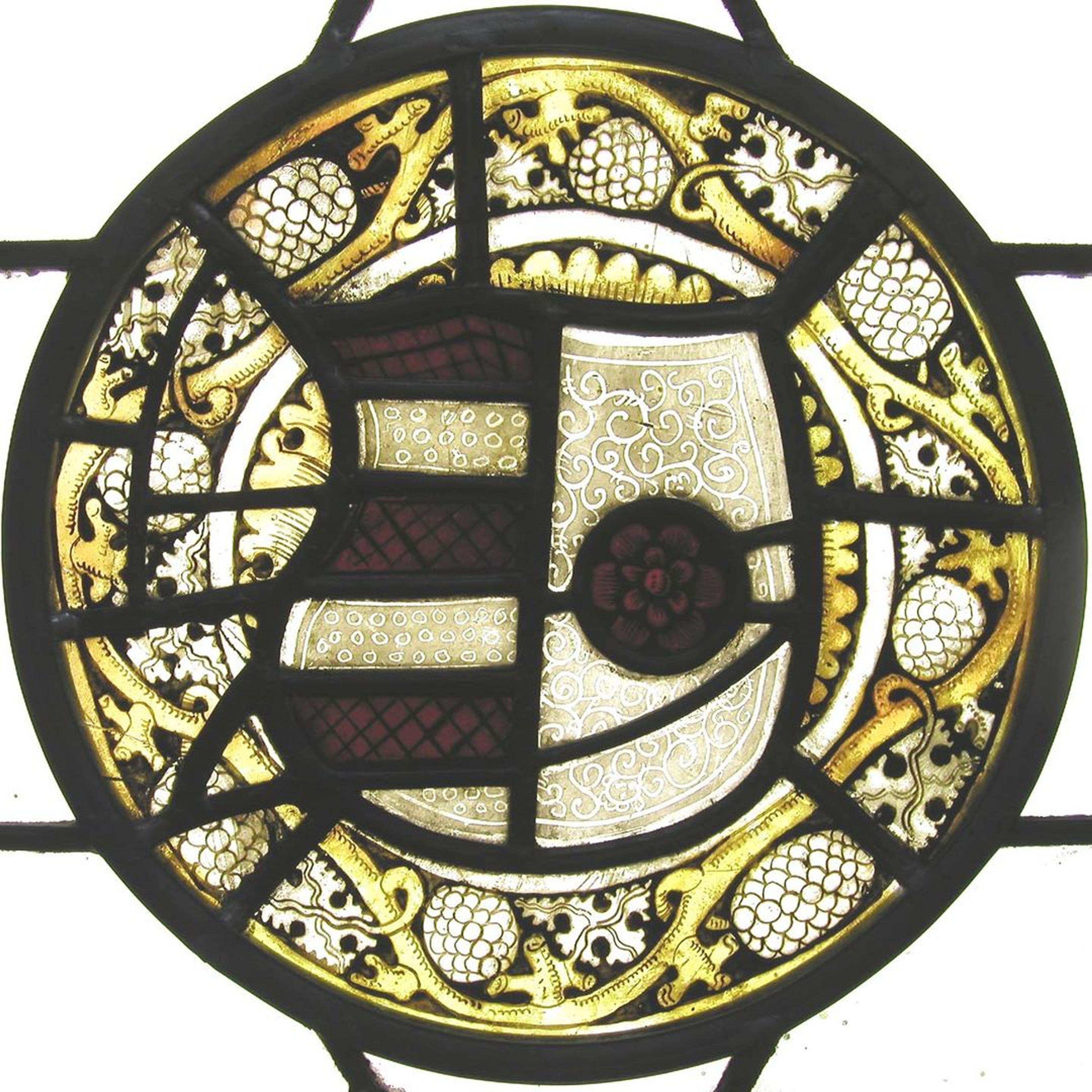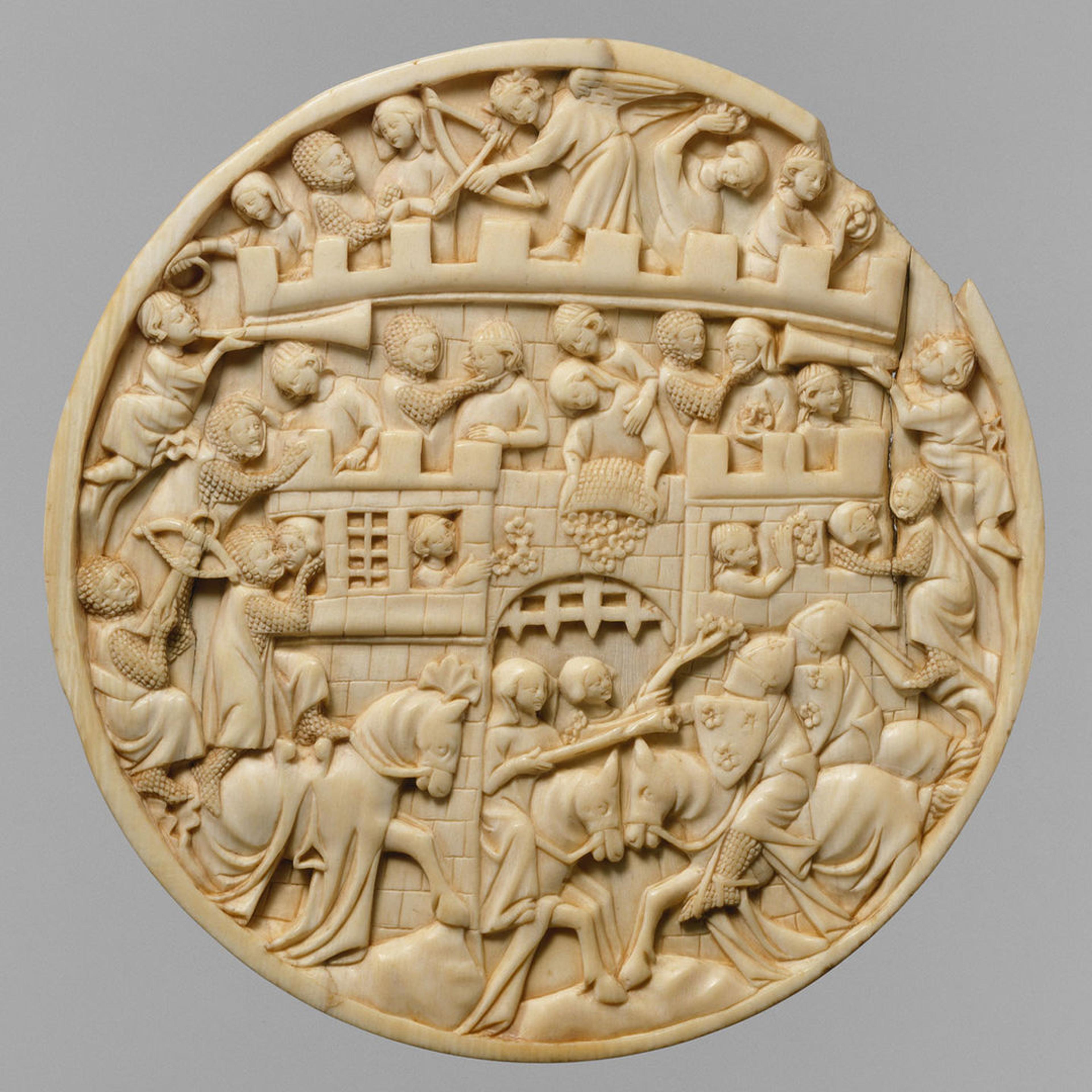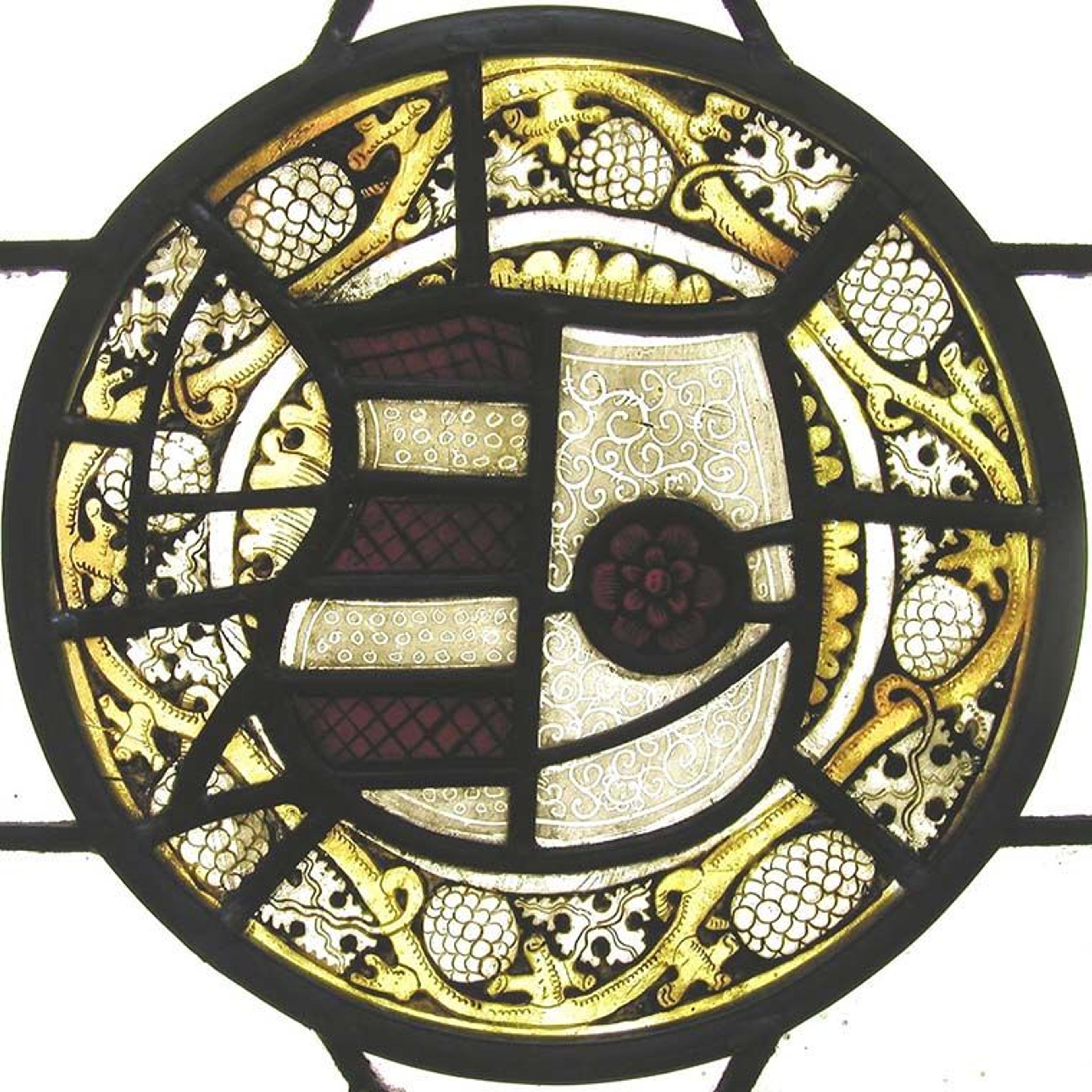
The arms depicted here are Barry of six Gules and Argent impaling Argent a Rose Gules. They remain unidentified. The petals on the rose are also much more numerous than usual.
Armorial Roundel. German, ca. 1500. Pot-metal glass, vitreous paint, and silver stain. Diam. 8 3/4 in. (22.3 cm). The Metropolitan Museum of Art, New York. The Cloisters Collection, 1980 (1980.214.4)

The defenders of the Castle of Love shower the attacking knights with roses. The knights' shields also depict three roses, laid out in the triangular heraldic convention of two of the charges to the chief of the shield and the third to the base.
Roundel with Scenes of the Attack on the Castle of Love. French, ca. 1320–40. Ivory. Diam. 5 9/16 x 1/2 in. (Diam. 14.1 x 1.2 cm). The Metropolitan Museum of Art, New York, The Cloisters Collection, 2003 (2003.131.1)
Plantagenet. Since you are tongue-tied and so loath to speak,
In dumb significants proclaim your thoughts:
Let him that is a true-born gentleman
And stands upon the honour of his birth,
If he suppose that I have pleaded truth,
From off this brier pluck a white rose with me.
Somerset. Let him that is no coward nor no flatterer,
But dare maintain the party of the truth,
Pluck a red rose from off this thorn with me.
—Henry VI, Part 1, Act 2, Scene 4
After the fleur-de-lis, the rose is probably the second most common floral charge to appear on heraldic shields. That's quite understandable, since the rose's emblematic associations ranged from the Virgin Mary to the Five Wounds of Christ to romantic love. In the military context of knights and noble families, the rose also suggested the fierce and often impenetrable thicket of prickled branches in which it grows. The white roses strewn around the fearsomely armed lion rampant that occurs on the shield of Finland might have raised just such an association in the minds of beholders. Alternately, roses might also have been chosen as a play on a name—the arms of the German town of Rosenberg in Baden-Württemberg, for example, or the Baltic baronial family von Rosen.
Unlike the highly conventionalized heraldic lily, the heraldic rose seems barely stylized at all. It appears not as the tightly wound and doubled modern rose of the hybridizer and florist, but mostly as the simple five-petaled wild roses of medieval hedgerows. (Pluck a flower from a wild dog rose (Rosa canina) or a sweetbrier (Rosa rubiginosa) and hold it next to the shield, and its heraldic counterpart might even pass for a crude botanical drawing.) While five petals are the norm in both nature and heraldry, the heraldic rose might sometimes have more than five petals, and sometimes has just four. The space between the slightly indented petals is usually a little exaggerated to allow for a better depiction of the sepals (modified leaves) that back the flower. A yellow circle at the center represents the "pincushion" of the stamens.
"Roses are red…" starts the familiar rhyme, and in heraldry they usually are. However, in addition to Rouge (red), roses also appear in the other tinctures or metals of the heraldic spectrum: Or (gold or yellow), Argent (silver or white), Azure (blue), Vert (green), Purpure (purple), and even Sable (black). (Heraldry has long been home to the mythical unicorn and the equally mythical black rose.) If the heraldic rose's pointy sepals and stamens are respectively Vert and Or, it is described as "barbed and seeded proper." A rose on a short stalk, almost always green, is said to be "slipped and leaved proper." In blazon, the language of heraldry, the term "proper" simply means that the heraldic color of the charge is the color closest to its natural counterpart.
Perhaps the most widely recognized reference to the heraldic rose occurs in the dynastic civil wars that rent England between 1455 and 1485, as the two rival branches of the House of Plantagenet vied for the throne. Some adherents of the House of Lancaster used a red rose as a heraldic badge to identify their party. Factions favoring the House of York, on the other hand, associated the white rose with their cause. (Badges are subsidiary heraldic devices, which are not part of a coat of arms. They were used as corporate logos might be used today.) It wasn't until the nineteenth century, however, that the conflicts were actually dubbed "the Wars of the Roses." The name was derived from a garden scene in Shakespeare's history play Henry VI, in which each side plucks an appropriate rose "from off this thorn." Henry Tudor's ascent to the throne as Henry VII united the two factions. In heraldry, the two roses were also united, and the White Rose of York was overlaid on the Red Rose of Lancaster. In fact, this Tudor Rose is in use to this day as a royal plant badge representing England.
References
Friar, Stephen, ed. A Dictionary of Heraldry. New York: Harmony Books, 1987
Parker, James. A Glossary of Terms Used in Heraldry. Rutland, VT: Charles E. Tuttle Co., 1982
